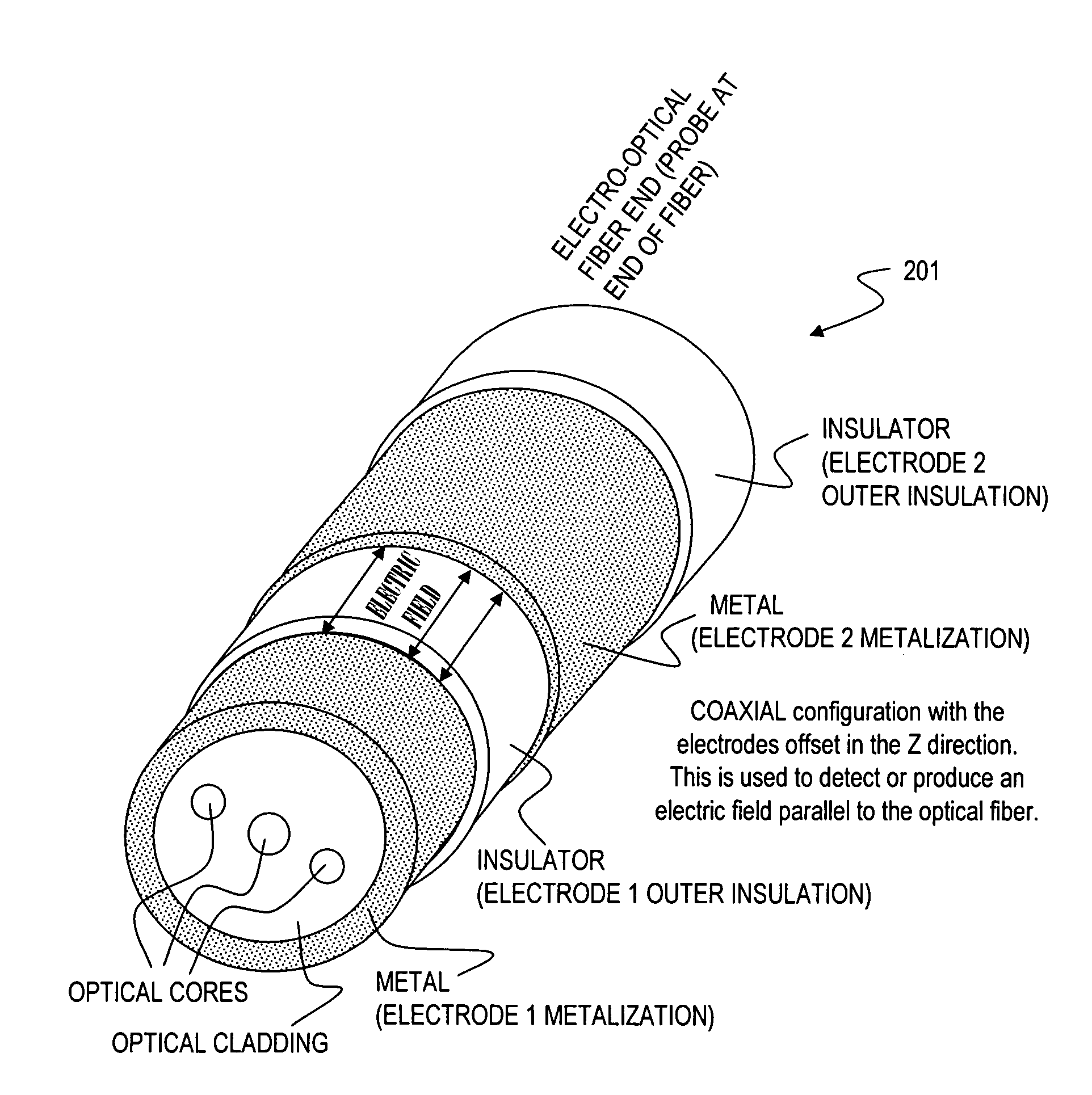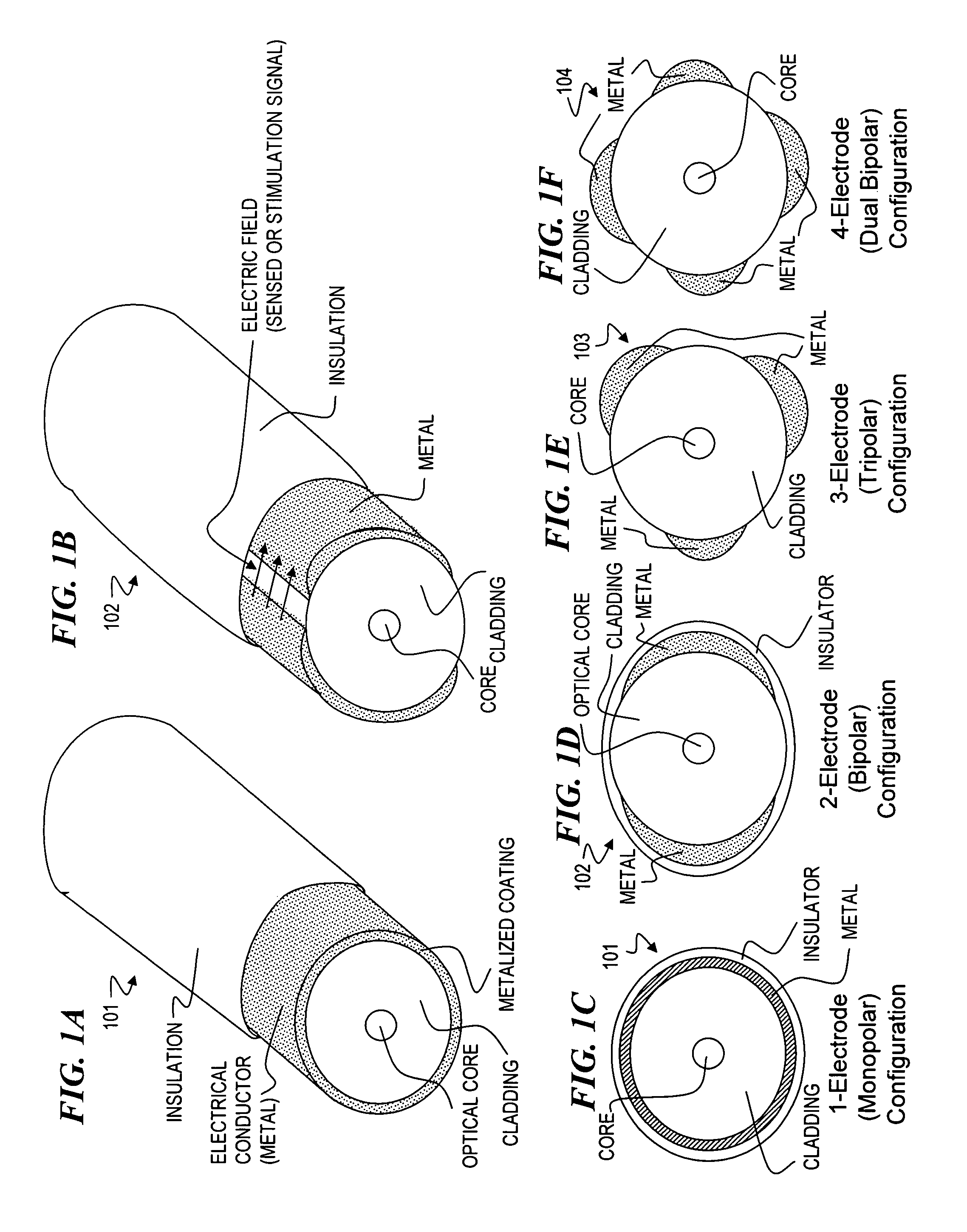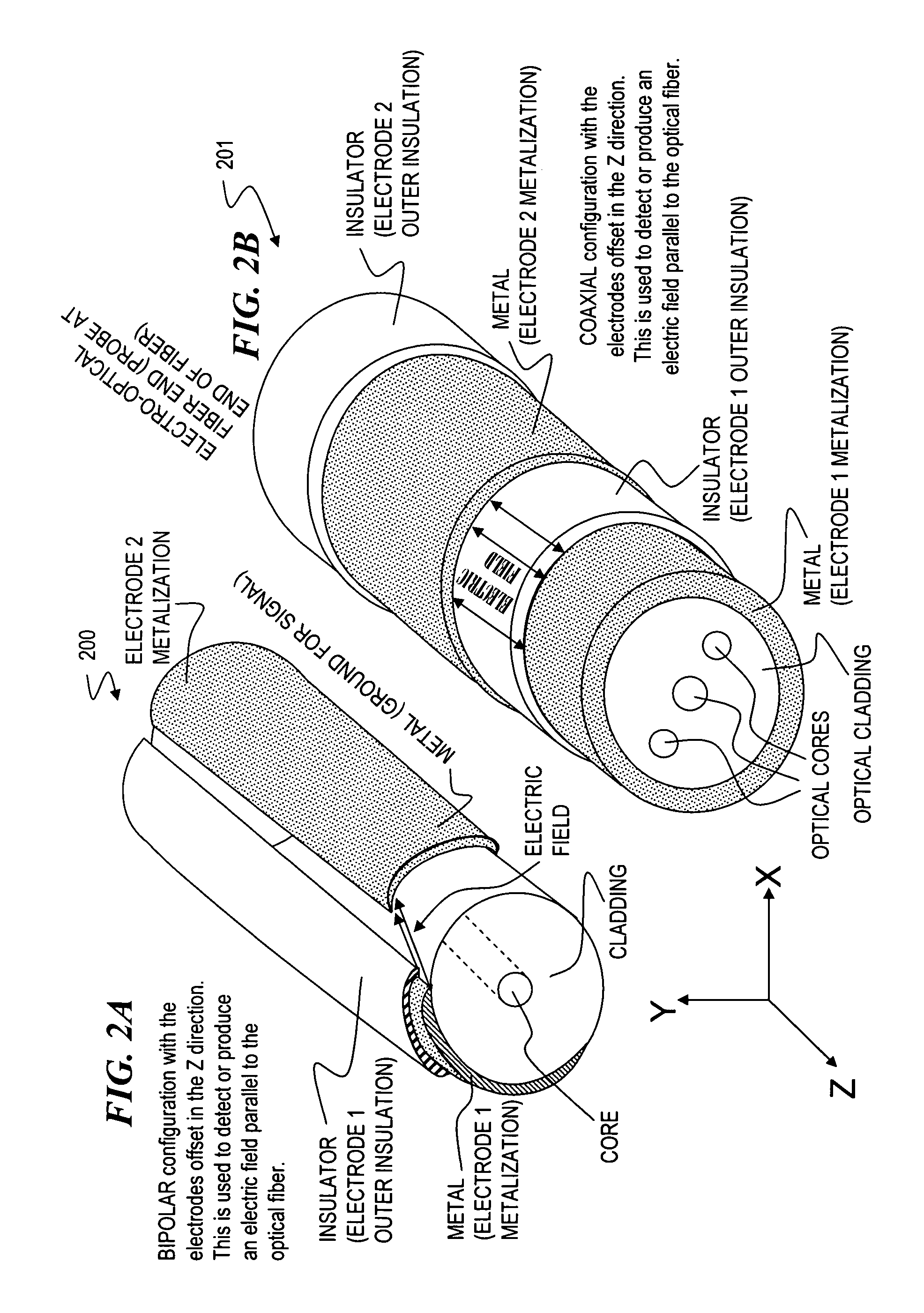[0021]In some embodiments, the probe is attached to an
implanted device (such as a battery-powered
microprocessor-controlled device that transmits an optical
signal to stimulate a portion of an animal (such as the vestibular nerves of a human, for example; however, the invention is not limited to the
vestibular system, but rather is generally useful for any use that benefits from both optical and electrical signals to and from one or more tissues of an animal) and that electrically senses a biological response (such as a compound nerve-
action potential (CNAP) response of a stimulated nerve)) or a physical condition (such as the temperature at the probe end, in order to determine the amount of heating resulting from the
optical stimulation, so as to deliver an amount of light that is effective to obtain the
nerve stimulation response without overheating and damaging tissue). In some embodiments, the sensed response or condition is used to control (e.g., increase, decrease, start, or stop) the optical
signal in order to obtain better treatment effectiveness and more precise control of the desired response. In some embodiments, the
optical fiber is also or instead used to deliver a much more intense light pulse or series of pulses, in order to provide therapy-type or
surgery-type results, such as ablating unwanted tissue, wherein there is an interaction between the intense light pulses that is sensed by received electrical signals conducted from the
fiber tip along the electrical conductors on the
optical fiber, and / or enhanced by electrical signals that are delivered to the
fiber tip along the electrical conductors on the
optical fiber.
[0024]In some embodiments, the device of the present invention is used in the stimulation of the
vestibular system. It is often necessary, during the placement of probes (e.g., optical fibers), to be able to both stimulate and detect the response resulting from the stimulation of the
vestibular system. Being able to have a
single probe that does this facilitates this placement process.
[0029]In some embodiments, the present invention is used in applications where there is a need for precise placement of an
electrode, but with the requirement to stimulate a large number of nerves, either simultaneously or individually. A single-core optical element (e.g., a
fiber with a single
waveguide) allows for extremely precise stimulation but can lack the ability to supply and / or spread enough power to stimulate large areas of nerves. In some embodiments, the electrical portion of the probe lacks specificity (since even with a
point source of
electricity, the electrical signal will spread across
electrically conductive tissue), but can provide sufficient power to stimulate large areas. In some embodiments, the optical-
electrical probe of the present invention is used in
deep brain stimulation where locating the probe at the interface between the
thalamus and
hypothalamus is important, but once there, a relatively large area of the brain needs to be stimulated.
[0031]The present invention provides several approaches to doing this. One uses discrete electrical probes located immediately adjacent to the optical fiber. The fiber and electrodes can be held together in a cannula,
glass tube,
polyimide sleeve or any other
biocompatible material. This has the
advantage of being very simple to do and allows independent optimization of the optical fiber and electrical probes.
[0032]A more compact approach, used in some embodiments, actually uses the fiber to carry both the optical and electrical signals. It is well known how to put metallized coatings on optical fibers. It is done routinely in order to be able to attach the fiber to optical mounts using solder for the purpose of alignment. In some embodiments, the
metal-layer structure includes typically a combination of Ni (for adhesion to the fiber), Pt, and / or Au (for wettability to the solder). In the present invention, the Au layer provides an excellent conductor for the electrical signal. Several configurations of the conductor(s) on an optical fiber are shown in the attached figures. The simplest monopolar configuration will be adequate for many applications. However, the multi-
electrode configurations can provide additional functionality as well as spatial selectivity.
[0033]Other embodiments use a configuration where the fiber is slid into a sleeve or jacket (or wrapped with a spirally wound film having one or more length-wise metallized conductors that when wound forms such a sleeve) that is patterned with the electrodes (e.g., a
Kapton or other flex circuit, wherein
metal conductors are formed and patterned (e.g., as parallel conductors extending along its length) on a
polymer substrate (and optionally covered with another
polymer, glass,
silicon nitride or the like as a top insulator), and this substrate with its conductors is wound or wrapped on the optical fiber). This allows independent fabrication of more complex
electrode patterns without having to develop new processes for
metallizing the fibers. The
Kapton-substrate circuits also readily lend themselves to easy termination. Any flexible substrate that can support a
metal pattern and is biocompatible can be used for this configuration.
 Login to View More
Login to View More  Login to View More
Login to View More 


